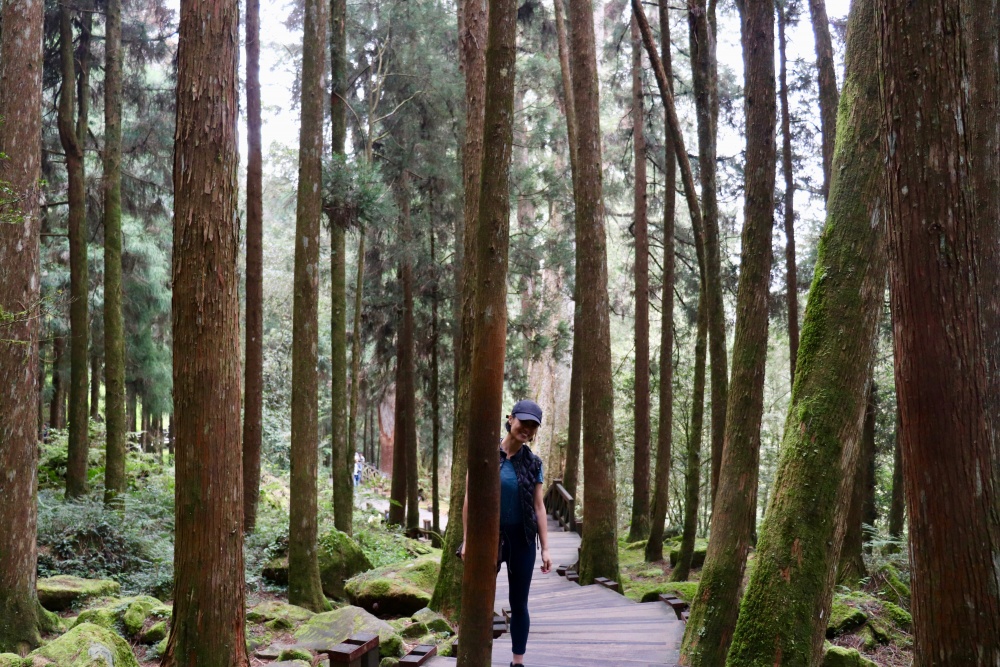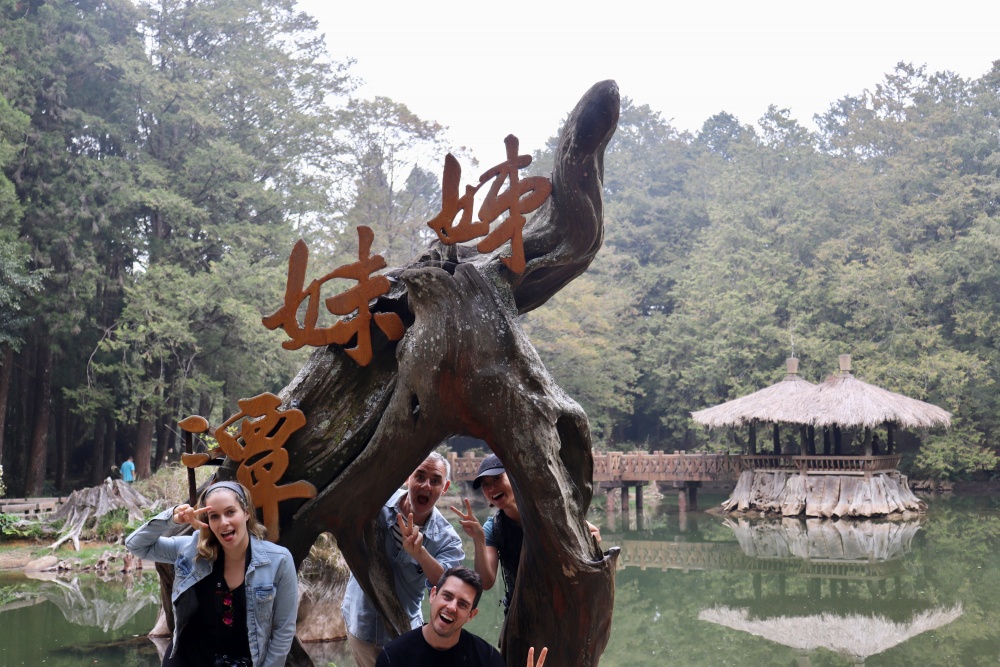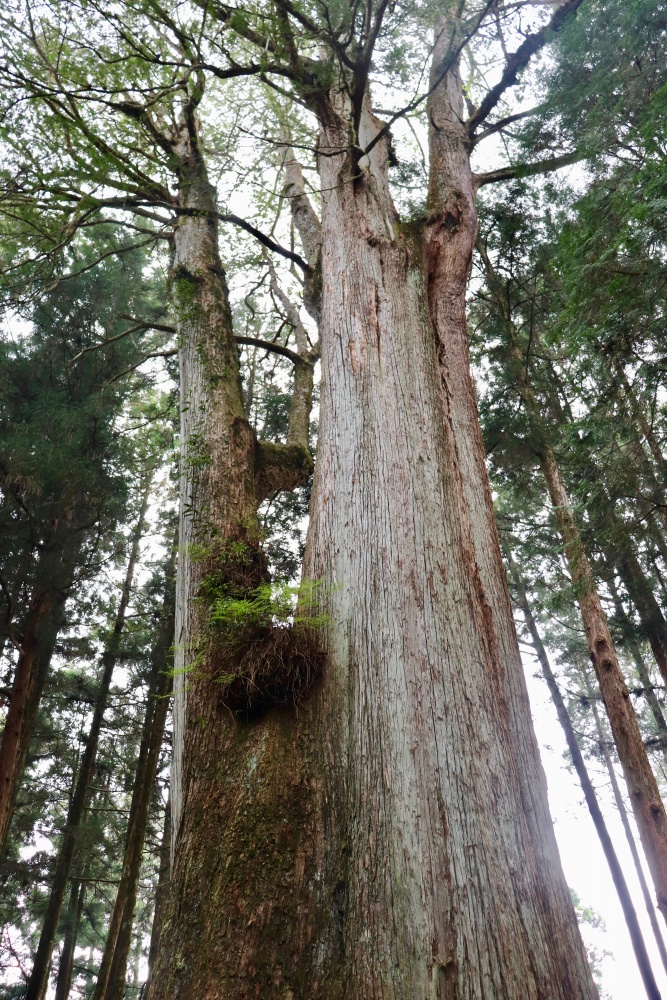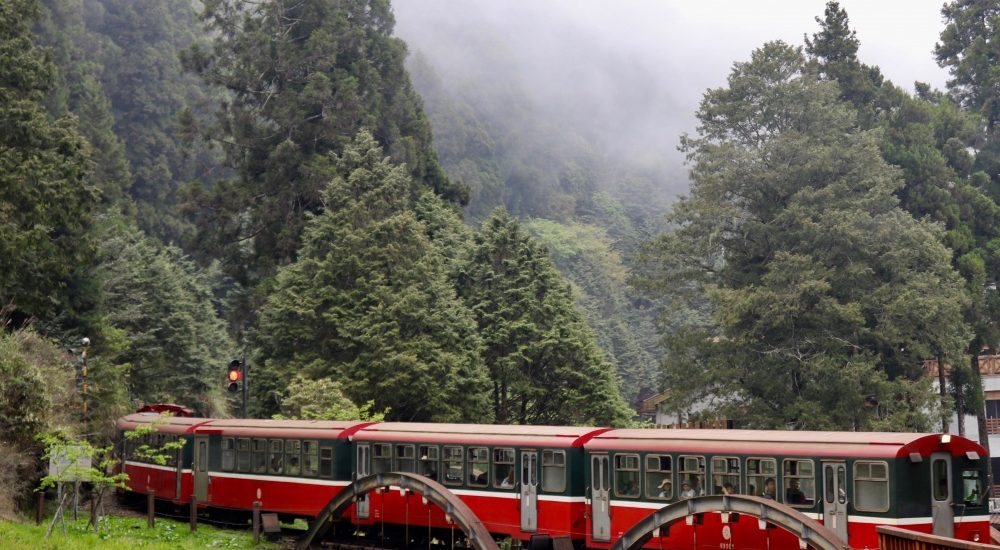I have wanted to visit Alishan National Forest, one of Taiwan’s top tourist spots, for many years now. The thought of hours driving along narrow, tortuous mountain roads with a child in tow, though, has usually been effective at laying that idea to rest. Jules has proven himself to be a hardy traveler this past year, so I decided to be bold and go for it. Since Philip’s nephew, Matthew, and his girlfriend, Katie, were in town I thought it would be nice for them to see a different part of Taiwan and to experience more of its natural beauty.

After traveling to Chiayi from Taipei by high-speed rail and spending a night there, we hopped onto the public bus the next morning for the three hour drive up to Alishan. Ideally, we would have taken the famous Alishan Forest Railway train up, but track repairs have put this leg of the train out of commission until the end of June. Eh, c’est la vie. The hot, steamy weather in Chiayi was long-forgotten as soon as we alighted in the higher elevation of Alishan (about 2500m or 8200ft) and were welcomed by a cool refreshing breeze. We dropped our bags off at Alishan House (built in 1934), which allowed us to stay right inside the park, giving us easy access to hiking trails and the train that would take us to the famous Alishan sunrise the next morning.

Alishan is one of Taiwan’s most famous tourist spots for a few reasons: the narrow-gauge railroad, the forests filled with 2000 year old plus Taiwan Red Cypress, Taiwan Yellow Cypress (hinoki) and cedar trees and the elusive sunrise. After a Hungry Man-sized lunch, we set out for a ride on the Alishan Forest Railway narrow-gauge train to take us to the Giant Tree Trail to see…yep, giant trees. The Alishan Forest Railway, unique in its 2 1/2 foot width, was built to accommodate logging needs and was completed in 1912 by both Japanese and Taiwanese efforts in order to transport logs down the mountain. As logging waned, the steam locomotives were replaced with diesel ones to accommodate the boom in tourism, and the modern Alishan Forest Railway was born. One of the loveliest parts of the train was the contrast of its dark red paint against the forest’s green background, making for some pretty pictures.
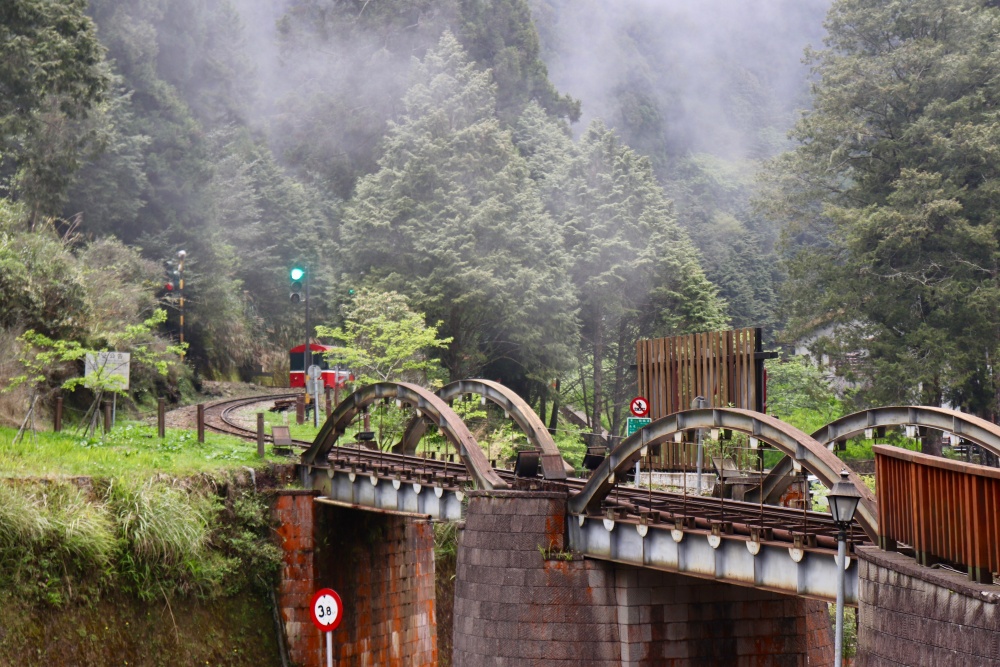
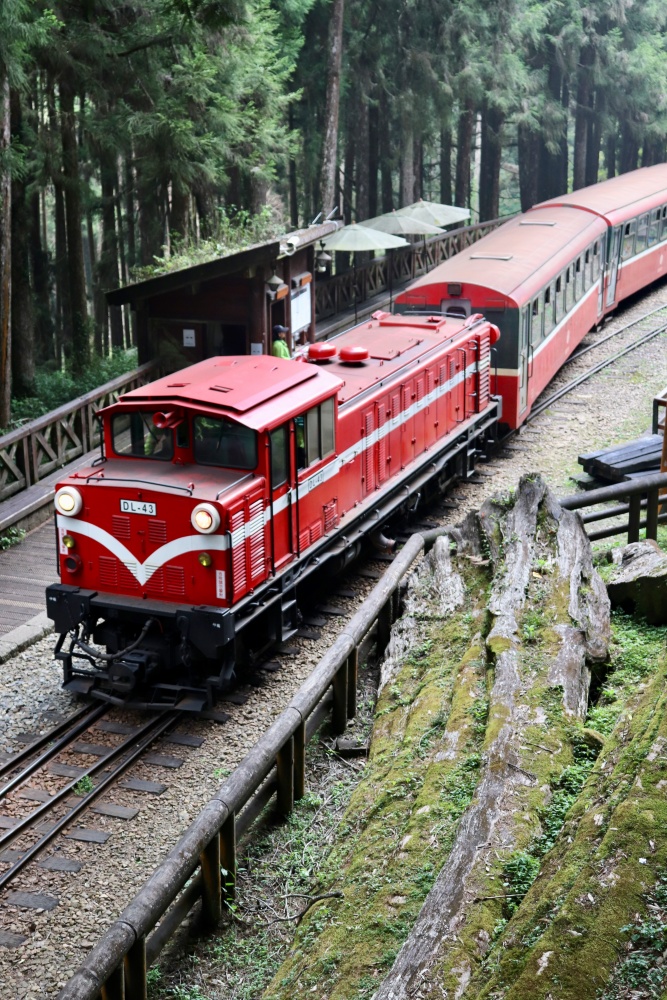
After disembarking at Shenmu Station, we were immediately humbled by the Alishan Sacred Tree (神木), a 174 ft tall cypress tree (sacred to the Taiwanese Tsou aborigines) that lived over 3,000 years surviving typhoons and earthquakes and ultimately done in by lightning in 1956. Out of respect for the Tsou, the tree was laid down on its side at its original site rather than chopping it up for its lumber. I love how Jules looks so little sitting in front of this beautiful totem of Taiwan’s aboriginal history.

We made our way uphill along the Giant Tree Trail with its soothing filtered light and buffered sounds owing to the height and relative density of these ancient beauties. We found tree trunks shaped like a heart, a pig and stopped for an obligatory Taiwanese-posed photo in front of the Three Sisters Pond. Dinner at Alishan House and a nightcap at the old coffee shop kept in its 1950s glory guaranteed a good night’s rest after a day of hiking in the fresh mountain air.
